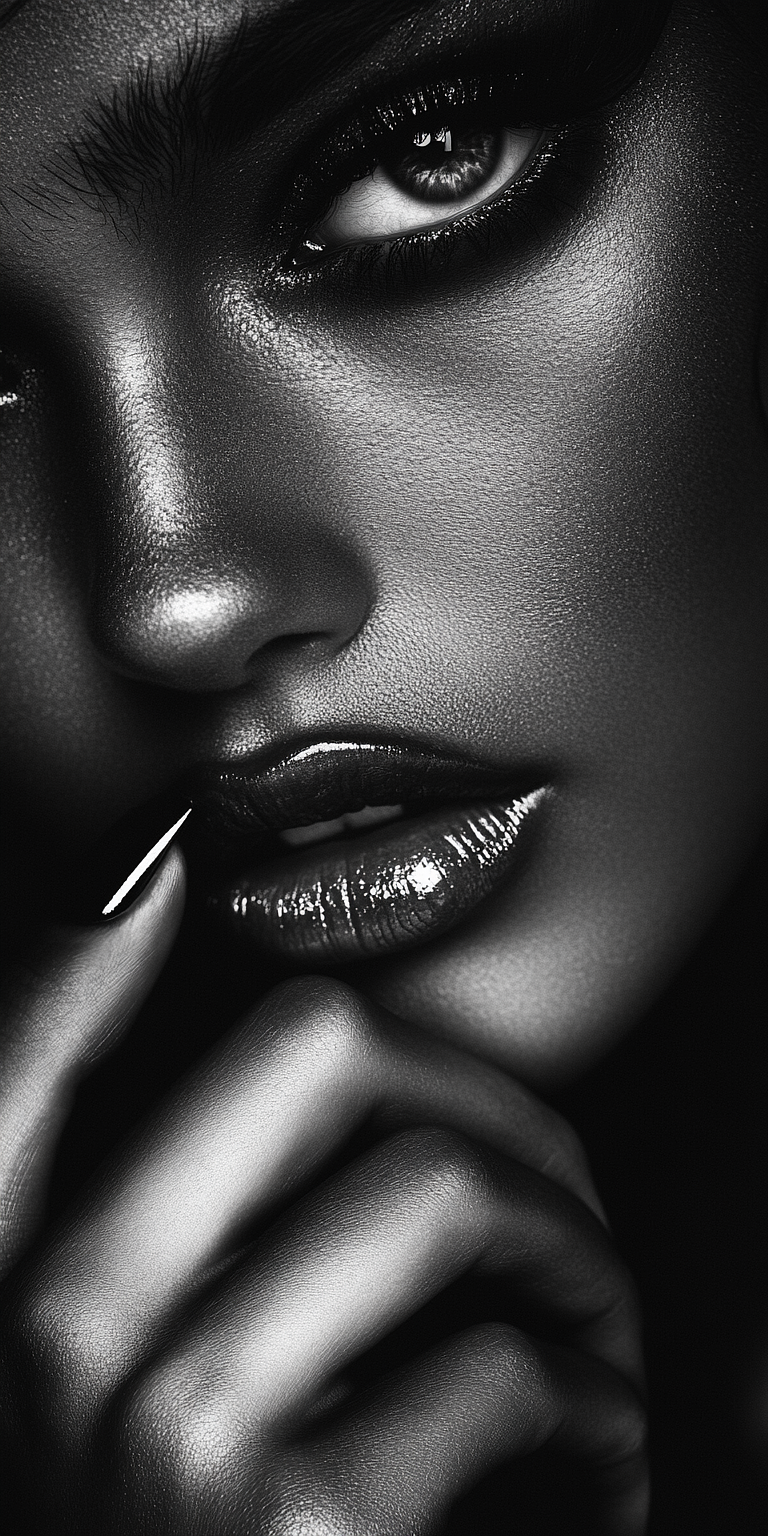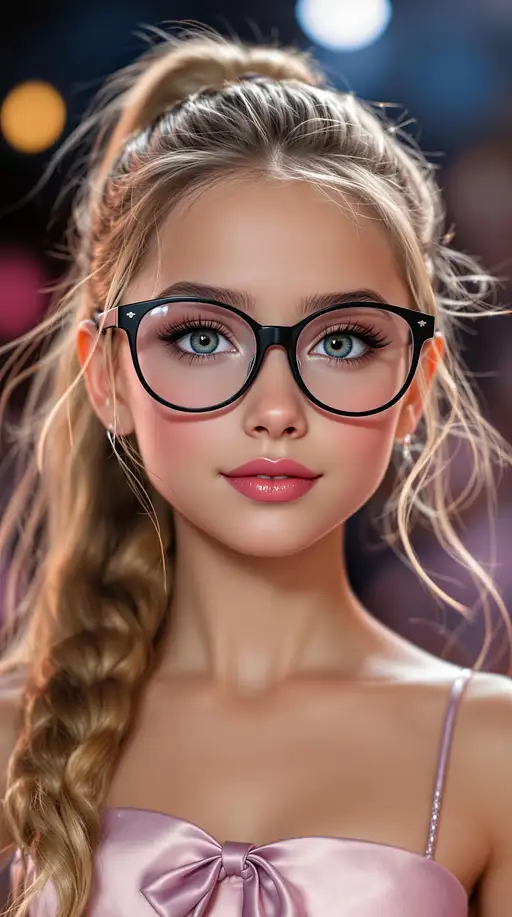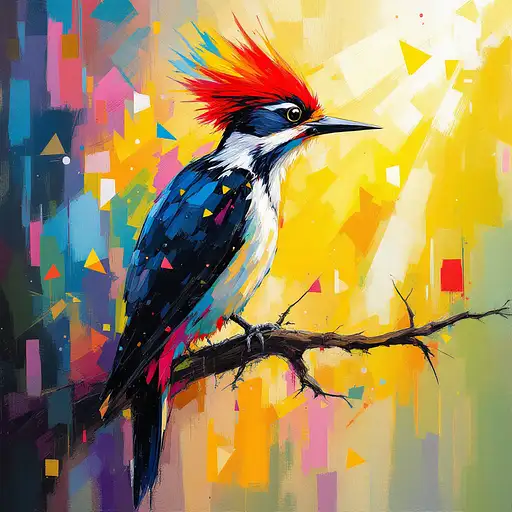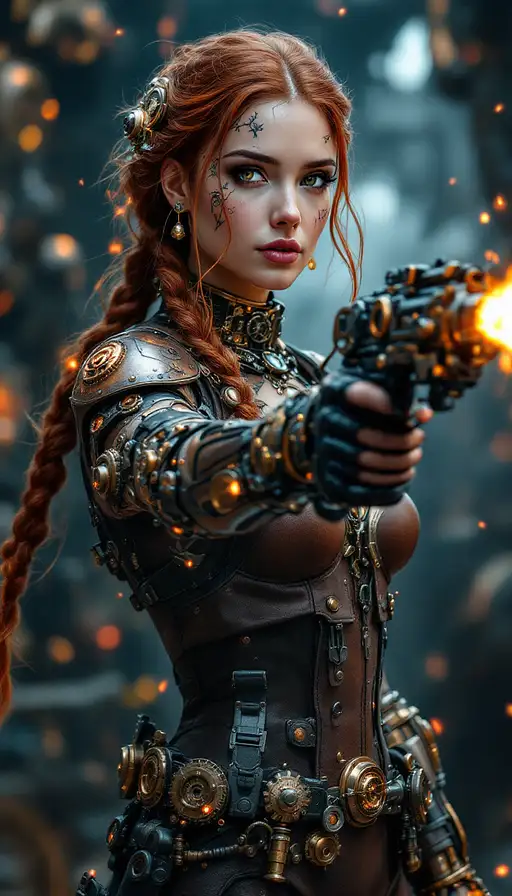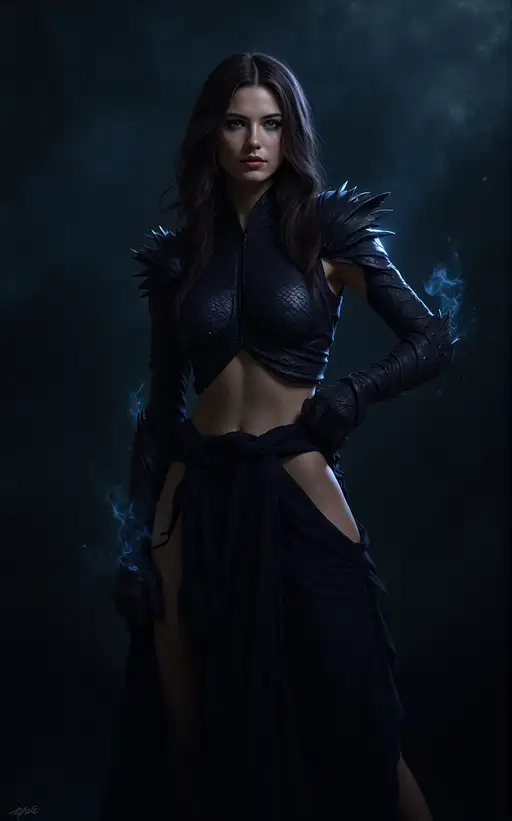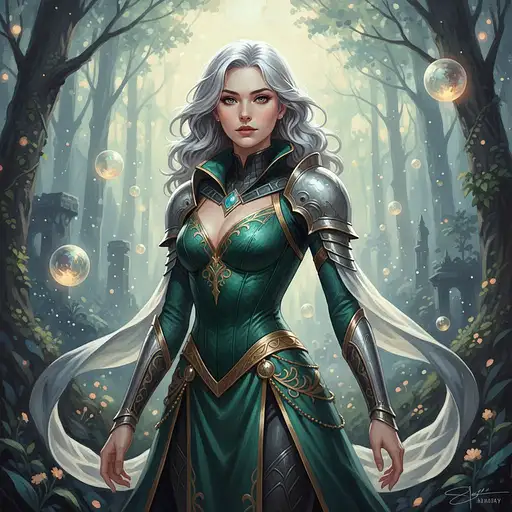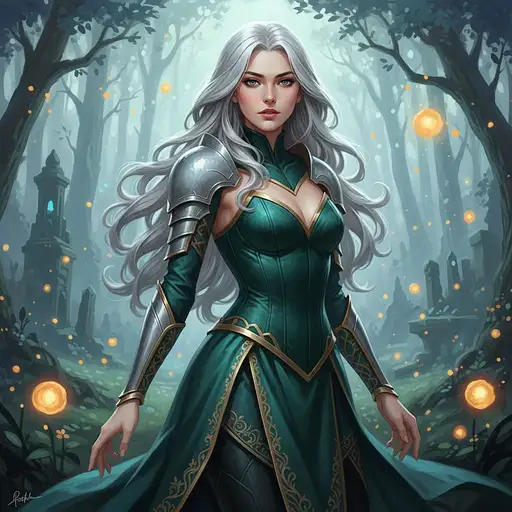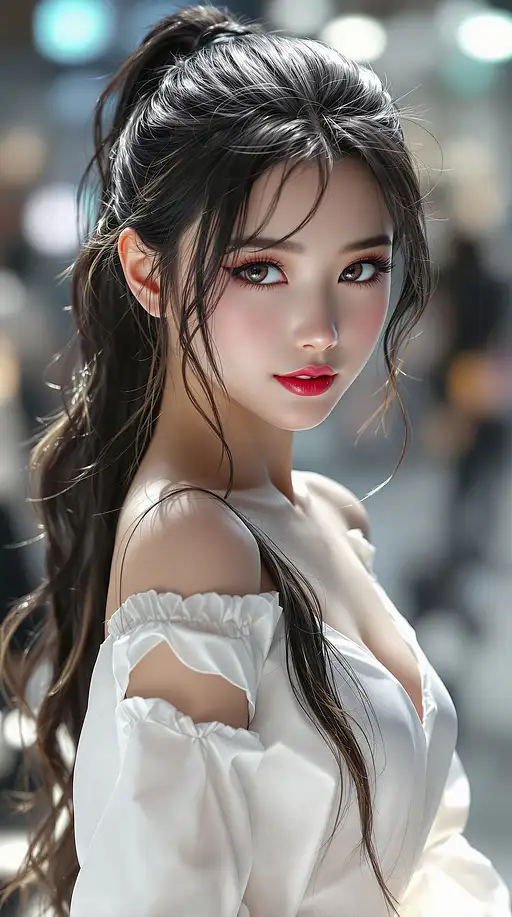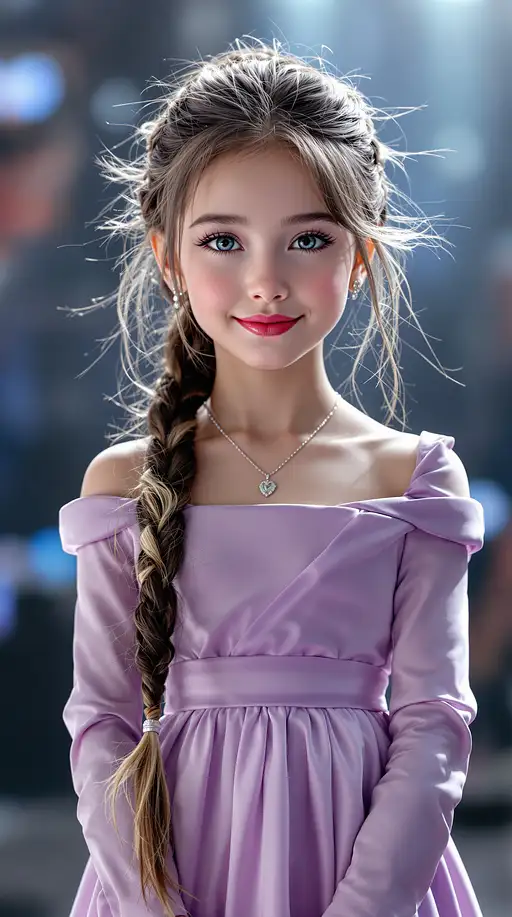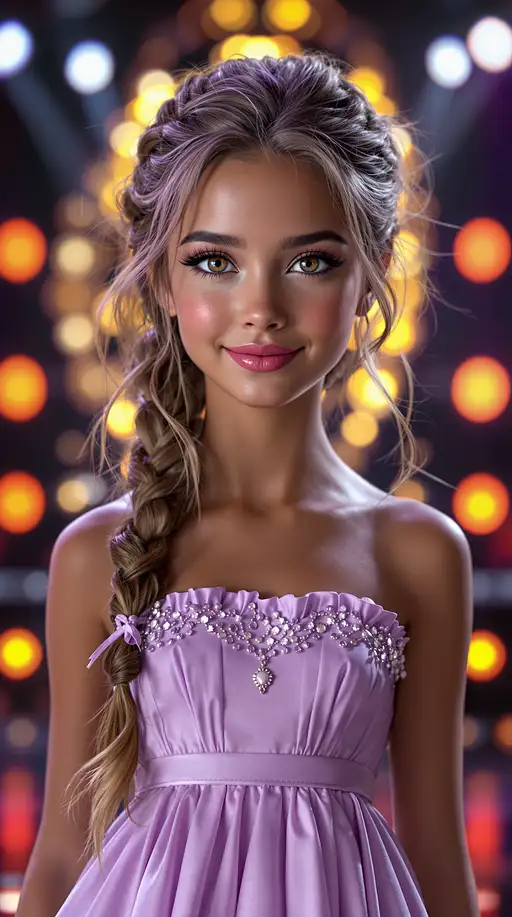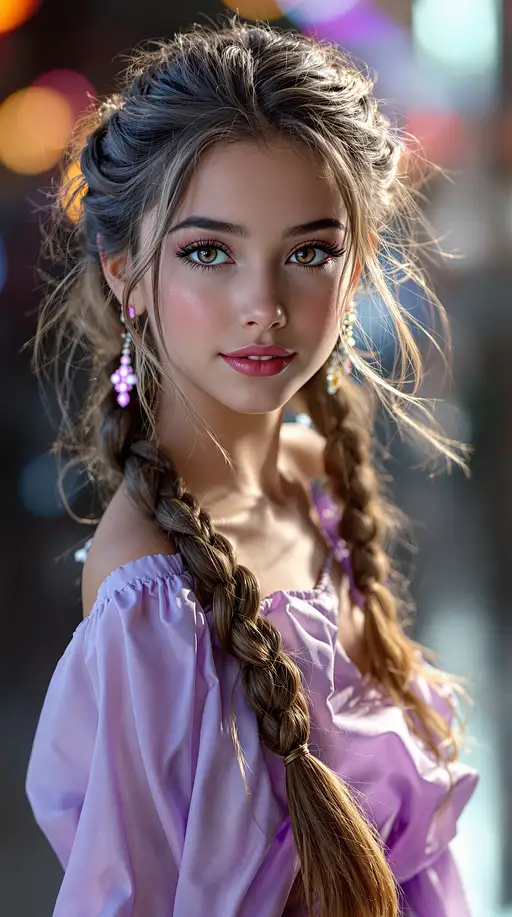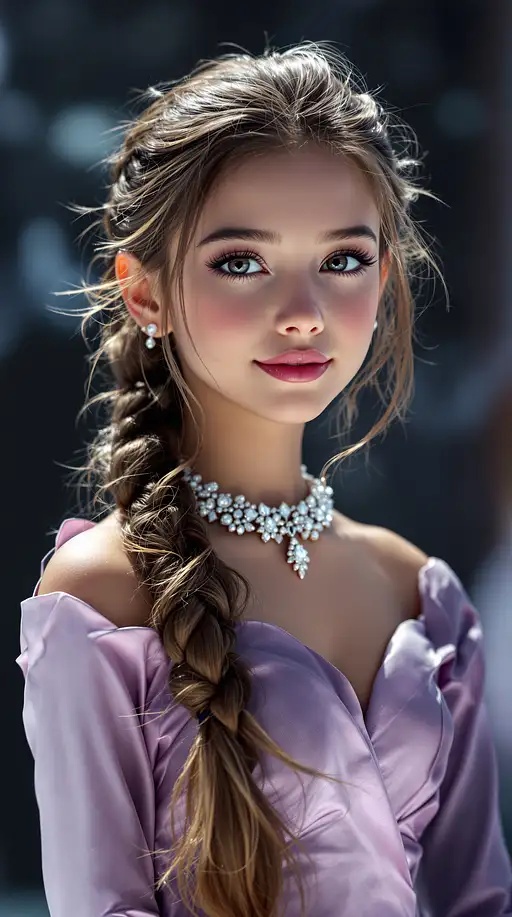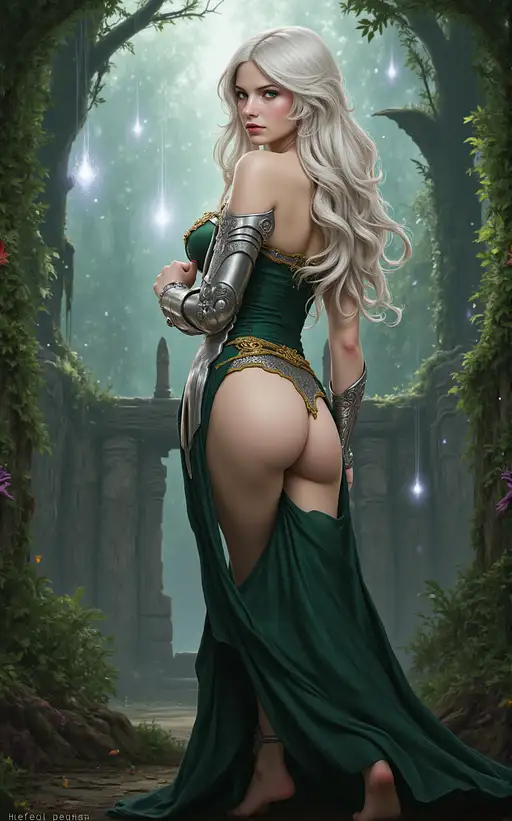
2 months ago
a breathtaking fantasy portrait of Gwenom, rendered as a highly detailed digital painting. The central figure is a striking female with flowing, silver-white hair that cascades in soft waves, framing her delicate yet strong features. Her body is elegantly slender, with a poised stance that exudes confidence and grace. She wears an intricately designed outfit, blending elements of armor and flowing fabricâmetallic silver pauldrons contrast with a deep emerald corset, while delicate gold embroidery adorns her sleeves and skirt. The background transports the viewer to a mystical realm, where ethereal forests glow under soft ambient lighting, with floating orbs of light and ancient ruins faintly visible in the distance. The art style should evoke the elegance of Alphonse Mucha, the precision of Ilya Kuvshinov, the vibrancy of Artgerm, and the depth of Greg Rutkowski, resulting in a sharp, matte-finished concept art piece that feels both timeless and modern.
